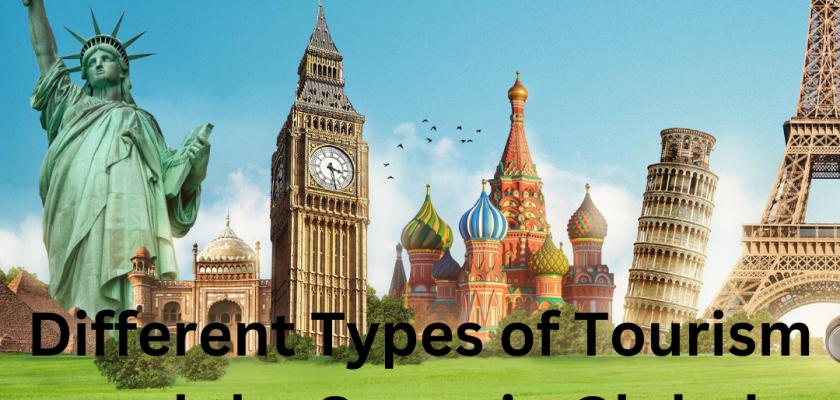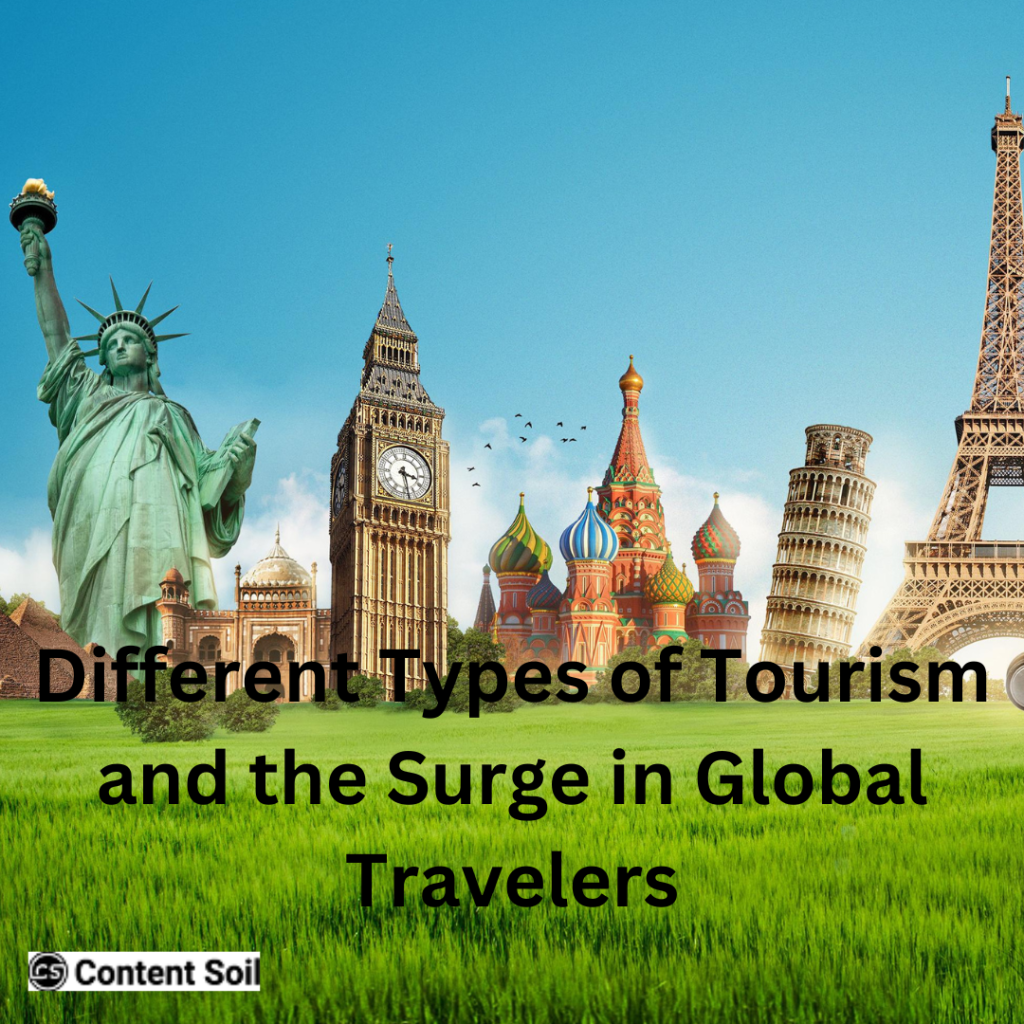Introduction:
Tourism has experienced a significant surge in recent years, with an increasing number of people exploring various destinations worldwide. The growth in global travel can be attributed to several factors, including advancements in transportation, changing lifestyles, and increased awareness of diverse cultures. This article explores different types of tourism and the factors contributing to the rise in travelers worldwide.
1:Leisure Tourism:
Leisure tourism is the most common form of travel, encompassing vacations, holidays, and recreational activities. People engage in leisure tourism to relax, rejuvenate, and experience new environments. This type of tourism includes beach vacations, sightseeing trips, adventure tourism, theme parks, and more. The rise in disposable income and flexible work schedules has enabled more individuals to engage in leisure tourism, seeking unforgettable experiences and moments of relaxation.
2:Cultural Tourism:
Cultural tourism focuses on exploring the history, heritage, and traditions of a destination. Travelers engage in activities such as visiting museums, historical sites, attending cultural festivals, and interacting with local communities. In recent years, cultural tourism has gained popularity as people strive to gain deeper insights into different cultures, broaden their perspectives, and appreciate the diversity of the world.
3:Eco-Tourism:
As environmental awareness grows, so does the popularity of eco-tourism. Eco-tourism promotes sustainable travel practices, aiming to minimize the negative impact on natural ecosystems and support local conservation efforts. Travelers choose eco-friendly destinations, participate in activities like wildlife safaris, nature walks, and engage in responsible tourism practices. The rising concern for the environment and the desire to preserve natural habitats have significantly contributed to the increase in eco-tourism.
4:Adventure Tourism:
Adventure tourism appeals to thrill-seekers and adrenaline junkies who seek excitement and unique experiences. It involves activities like hiking, mountaineering, bungee jumping, scuba diving, and more. The rise in adventure tourism can be attributed to advancements in safety measures, increased accessibility to remote destinations, and the desire for personal growth and challenge. Many travelers now seek thrilling adventures to push their limits and create lasting memories
5:Medical tourism:
Medical tourism refers to traveling to another country to receive medical treatments or procedures. This type of tourism has gained popularity due to the rising cost of healthcare in many countries, long waiting times for certain procedures, and the availability of high-quality medical services abroad. Patients often combine medical treatments with leisure activities, making it a unique blend of healthcare and tourism.
Factors Contributing to Increased Travelers:
a) Globalization and Connectivity:
Advances in transportation and communication have made traveling more accessible and affordable. The ease of booking flights, accommodations, and obtaining visas has encouraged people to explore different parts of the world.
b) Digital Influence:
The rise of social media platforms and travel websites has created a desire to capture and share experiences. The visual appeal of destinations, recommendations from influencers, and user-generated content have inspired individuals to embark on new travel adventures.
c) Changing Lifestyles:
Evolving work patterns, such as remote work and flexible schedules, have allowed people to combine work with travel. The desire for work-life balance has led to the emergence of “digital nomads” who travel while earning a living.
d) Rising Disposable Income:
The growth of the middle class in many countries has increased disposable income, enabling more individuals to afford travel. As people prioritize experiences over material possessions, they allocate a significant portion of their income to explore new destinations.
e) Cultural Exchange and Education:
With increased globalization, people have recognized the value of cultural exchange and cross-cultural understanding. Traveling allows individuals to learn from different cultures, breaking down barriers, and fostering a sense of unity and appreciation for diversity.
Conclusion:
The tourism industry has experienced remarkable growth in recent years, fueled by various factors such as leisure, cultural, eco, adventure, and medical tourism. The increased accessibility, changing lifestyles, digital influence, rising incomes, and the desire for cultural exchange have contributed to the surge in global travelers. As more people embark on journeys around the world, it is crucial to promote sustainable and responsible travel practices to ensure the long-term preservation of our planet’s natural and cultural heritage.


